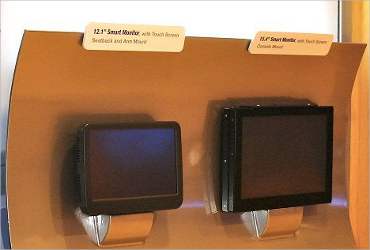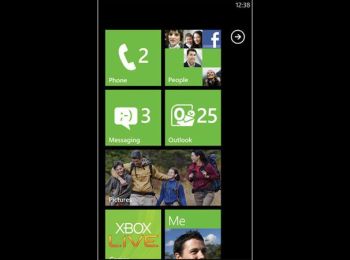Google Inc. and Oracle Corp. chief executive officers are squared off in court today to resolve a dispute that may pose the biggest threat to Google's Android mobile software, now running on more than 150 million devices.
Google's Larry Page and Oracle's Larry Ellison were ordered to appear before a federal court magistrate in San Jose, California, after tussling over patents for more than a year. Oracle accused Google of infringing patents related to its Java software, and a settlement means the companies avoid the risk of having a jury decide whether Google owes royalties.
“It's like Gorbachev and Reagan,” said Scott Daniels, a lawyer with Westerman Hattori Daniels & Adrian LLP in Washington. “The greatest chance of settling the case, of ending the Cold War, to use the analogy, is to have the two highest figures there.”
Oracle's suit, filed in August 2010, may represent a bigger menace to Google's software than challenges from Apple Inc., which has already won patent decisions against Android device makers. In settlement talks, Page aims to avoid having to pay Oracle licensing fees that analysts at Citigroup Inc. said could be as high as $15 per device. That sum might slow the adoption of the software, which Google gives away.
‘Productive Day'
“We are looking forward to a productive day,” Page said as he arrived at the courthouse today.
Ellison is under pressure to wring profit from the acquisition of Sun Microsystems Inc. and its Java software after a report in June showed falling hardware sales, raising concern that Redwood City, California-based Oracle may not be making most of the $7.3 billion deal, which closed last year.
“We'll do the best we can,” Ellison said today when he got to court.
Jim Prosser, a spokesman for Mountain View, California- based Google, said that the discussions, after more than 10 hours, had ended for the day. Prosser declined to comment further on the talks. A second court conference is scheduled for Sept. 21, according to court records.
Deborah Hellinger, a spokeswoman for Oracle, declined to comment earlier in the day.
Ellison, 67, has demonstrated his mettle as an opponent, said Neil Herman, an analyst at Ticonderoga Securities. He prevailed in 2009 after an almost two-year fight against Swiss billionaire Ernesto Bertarelli over who can determine the challenger in the America's Cup yachting competition.
And after a trial where Ellison testified, a federal jury awarded Oracle $1.3 billion in damages against rival SAP AG, which it accused of stealing software. While a judge ruled this month that the verdict was “grossly excessive,” Oracle vowed to pursue “the full measure of damages” it believes are owed.
“Larry Ellison has been masterful historically in his ability to hire good attorneys who give good advice and has been quite successful in the legal battleground,” said Herman, who is based in New York.
‘Well-Matched CEOs'
Page, 38, who succeeded Eric Schmidt in April, may prove a worthy opponent, said Paul Saffo, managing director at San Francisco-based Discern Investment Analytics Inc., which provides financial tools for institutional investors.
Ellison, who founded Oracle in 1977 and has been its CEO since that year, is known for his blunt manner, Saffo said. Within days of becoming CEO in April, Page shook up the company's leadership, promoting seven of his managers to senior executive positions to streamline decision making.
On Page's watch, Google has also bulked up on patents and the attorneys it needs to defend against allegations of infringement. The company agreed in August to buy Motorola Mobility Holdings Ltd. for $12.5 billion, gaining more than 17,000 patents.
“The only difference between these two men is their age, not their skills,” said Saffo, who said he holds some shares of Google. “They are two well-matched CEOs.”
‘Wishful Thinking'
Both executives were “strongly” urged to attend today's session by U.S. District Judge William Alsup, who has been overseeing the case, after opposing sides initially said they would send lower-ranking executives.
Magistrate Judge Paul Grewal in San Jose will oversee settlement talks. Grewal's role is to play devil's advocate to each side, said Paul Janicke, a lawyer and professor who teaches intellectual property law at University of Houston Law Center.
“You try to portray the worst case for each side --‘Here's what could happen to you' -- so that they will see their down side,” said Janicke, who has mediated patent disputes.
Oracle initially estimated that damages from allegedly unauthorized use of Java technology would amount to as much as $6.1 billion. Alsup threw out the tally, calling it “wishful thinking,” according to a July 22 order.
In the same order Alsup also took Google to task for what he called “Soviet-style negotiation” in suggesting that a reasonable royalty would be at most $100 million.
Royalty Fees
Undeterred by the judge's reproach, Ellison will likely ask for an ongoing licensing fee for each device that sports Android software, said Walter Pritchard, an analyst at Citibank Global Markets. Oracle may seek anywhere from $5 to $15 per device, he said. Richard Windsor, an analyst at Nomura Securities, said Oracle may seek less than $1 a device.
Any amount would add up quickly. More than 550,000 Android devices are activated each day, Page said last month. Introduced in 2008, Android has become the leading software for smartphones, with 43 percent of the market in the second quarter, up from just 17 percent a year earlier, according to Gartner Inc.
Java, the point of contention, has emerged as an industry standard for writing business software and is widely used to create Web-based applications. After buying Sun in January 2010, Oracle said it would make more money from Java than its inventor had. Sun collected just $220 million in Java-related revenue in fiscal 2008.
Oracle's Dilemma
Companies including Research In Motion Ltd., Amazon.com Inc. and Sony Corp. already license Java. Oracle claims that Google's Android relies on technology that infringes Java patents, and that Google should take a license.
Android has proven itself vulnerable in legal battles before. Apple won a U.S. International Trade Commission ruling in July in a patent-infringement case targeting HTC Corp.'s Android-based mobile phones.
Oracle's efforts could be more damaging to Android, said Jack Gold, an analyst at J. Gold Associates LLC in Northborough, Massachusetts.
“It strikes the foundation of Android,” Gold said. “What Oracle is saying is, ‘No, Android is fundamentally flawed in that it's based on our invention and you've copied our invention.' It much more goes at the core of Android.”
Android Cost
A royalty fee would increase the cost of using Android and may cause some handset makers to consider alternative operating systems. Still, Google, with its $39.1 billion in cash and short-term securities, could absorb some of the fee charged to partners that make the devices, said Will Stofega, program director at IDC. While giving away the software, Google aims to make money through advertising that it puts on the smartphones.
If Oracle does score a victory against Google, it won't want to extract too high a fee, said Ray Valdes, an analyst with Gartner. Android needs to be successful for Oracle to get any royalties from the devices, he said.
The case is Oracle America Inc. v. Google Inc., 10-03561, U.S. District Court, Northern District of California (San Francisco).
















